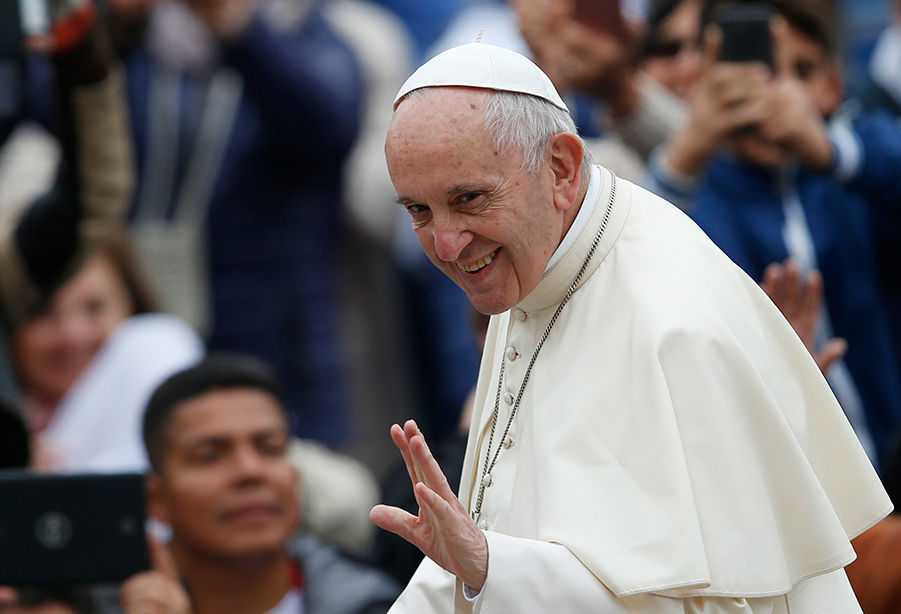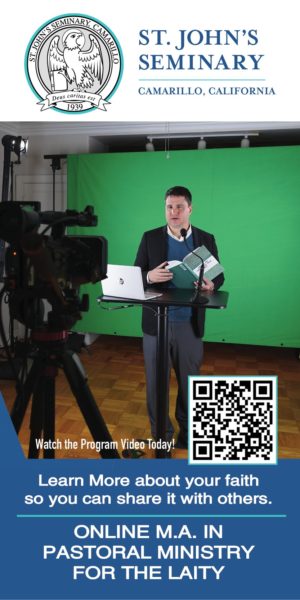Two recent stories about Pope Francis have elicited either praise or criticism, depending on one’s point of view, but also pivoting on a perception that’s actually questionable: to wit, that once again, this maverick pontiff is breaking the mold.
The first story came when the pope spoke at a conference celebrating the 25th anniversary of publication of the Catechism of the Catholic Church under St. John Paul II, and called for a firmly abolitionist stance on the death penalty in official Catholic teaching.
“[The death penalty] is, of itself, contrary to the Gospel, because it is freely decided to suppress a human life that is always sacred,” he said. “In the final analysis, God alone is the true judge and guarantor.”
Recognizing that such a position marks a step forward in official Catholic teaching, Pope Francis added that “doctrine cannot be conserved without allowing it to progress.”
“The Word of God is a dynamic reality, always alive, that progresses and grows because it tends towards a fulfillment that men cannot stop,” he said.
The other story came when the pope announced his intention to convene a special Synod of Bishops in October 2019 made up of prelates from the Pan-Amazonian region: Bolivia, Brazil, Colombia, Ecuador, French Guyana, Guyana, Peru, Venezuela and Surinam.
The main purpose, he said, is to discuss evangelization in the region, with special attention to the oft-forgotten indigenous persons of the Amazon.
It was seen as a vintage Pope Francis touch, inverting the usual priorities by giving more attention to the peripheries than to the self-proclaimed “center.” Note, for instance, he’s certainly not calling a special synod for Western Europe or North America. The gathering is also expected to have a strong social justice imprint, in which issues such as environmental protection, a just distribution of land, workers’ rights and income inequalities will all figure prominently.
In both cases, the early take was that this is just Pope Francis being Pope Francis — pushing the envelope and moving the Catholic Church steadily to the left. To be sure, there’s a legitimate debate to be had on both fronts.
On the death penalty, many Catholics will insist that you can’t call it “inherently” evil when previous popes and saints of the Church didn’t, and, anyway, there may be times when it’s the only just option available. On the Amazon, many economists and social analysts will tell you the answer is more economic development, not less, and overly suffocating environmental and labor regulations aren’t actually in the interests of the region’s poor.
Whatever one makes of the pope’s outlook, however, here’s the thing: Looked at in historical terms, there’s a good argument that both on the death penalty and on the Amazon, Pope Francis isn’t breaking with tradition; he’s in perfect continuity with it.
On the death penalty, one could say that the entire arc of papal reflection over the last century and a half has been leading up to this moment.
On that score, there’s nothing quite like a visit to Rome’s Criminology Museum, where, in a back room on the first floor, stands the papal guillotine. From its introduction in 1816, a gift of the French to the Papal States, it dispatched scores of convicted criminals by papal warrant. (Prior to that, papal executioners relied on the noose and the axe.) The guillotine’s final use came on July 9, 1870, just two months before Italian revolutionaries captured Rome.
Yet beginning in the 20th century, popes clearly began to shift.
When the Vatican City State came into existence in 1929, its fascist-era “fundamental law” included a provision for execution of anyone who tried to kill the pope. When that law was updated in 1969, however, Pope Paul VI removed this provision. He also begged governments on several occasions not to carry out executions. Both the atheistic Soviet Union, in 1971, and ultra-Catholic Spain, in 1975, ignored his appeals.
In his 1995 encyclical “Evangelium Vitae,” Pope John Paul II wrote that the only time executions can be justified is when they are required “to defend society,” and that “as a result of steady improvements … in the penal system such cases are very rare if not practically nonexistent.”
When the new Catechism of the Catholic Church appeared, it did not ban capital punishment, but expressed a strong preference for “bloodless means.” Such strategies, it said, “better correspond to the concrete conditions of the common good and are more in conformity to the dignity of the human person.”
On the stump, St. John Paul II used even sharper language. During a visit to St. Louis in January 1999, he said the death penalty is “both cruel and unnecessary.” Human life must not be taken away, he said, “even in the case of someone who has done great evil.” Society can protect itself without “definitively denying criminals the chance to reform.”
St. John Paul II relentlessly interceded on behalf of death row inmates, and the St. Louis trip occasioned his best-known success. Then-Missouri Gov. Mel Carnahan commuted the death sentence of Darrell Mease in response to a papal plea for mercy.
At the time, then-Cardinal Joseph Ratzinger, Pope John Paul II’s top theologian, said that Catholicism was witnessing a “development in doctrine” on the death penalty. As pope, Benedict XVI, too, appealed for mercy whenever someone was scheduled for execution, and in 2011 he applauded the Community of Sant’Egidio for campaigning for global abolition of capital punishment.
Granted, it’s still a significant step to move from saying the conditions under which the death penalty may be justly applied don’t exist anymore, to saying it’s always and everywhere immoral. Nonetheless, one could easily conclude that in saying so, Pope Francis isn’t breaking with his predecessors, but bringing their developing position to full flower.
On the Amazon, one could make a similar case. When he was in Brazil in 2007, Pope Benedict practically declared protection of the Amazon, both its peoples and its biodiversity, a moral crusade.
“The devastation of the environment in the Amazon Basin, and the threats against the human dignity of peoples living within that region, call for greater commitment in the different areas of activity than society tends to recognize,” Pope Benedict said, speaking in a session with Brazilian youths.
Those words built on comments Pope Benedict had made in 2006, when he said that the beauty and grandeur of the Amazon basin’s rivers and forests “speak of God and his magnificent work for the benefit of humanity.”
Pope Francis’ initiative also clearly builds on the leadership of the Brazilian bishops.
“The Church is not against development, but it opposes development that deprives populations of their future. We have to nurture respect for nature,” said Cardinal Orani Joao Tempesta of Rio de Janeiro, speaking on behalf of the Brazilian National Bishops’ Council in February 2007.
“Soy planting is causing the same devastating effect as did the spread of big commercial ranching in the 1960s and 1980s,” said Cardinal Odilo Scherer of São Paulo. He called on the government to strictly control the expansion of farmland, “so that measures are no longer taken after the problem is already there, after the forest is felled and burned.”
None of this is to say that Pope Francis is necessarily right, either on the death penalty or his prescriptions for the Amazon.
It is to say, however, that if he’s wrong, he’s got company. These are hardly the only cases in which steps taken by Pope Francis hailed as innovations were actually more akin to “cashing in” on trajectories with much earlier roots, such as his 2016 meeting with Patriarch Kirill of Moscow and his 2015 role in opening up U.S.-Cuba relations.
In the most recent for-instance, think about where the Catholic Church was on capital punishment in July 1870, as compared to where it stood in 2013, when Pope Francis took office, and it might recast reflection on whether his latest comments represent a revolution — or, perhaps, a natural evolution, and one that’s actually been in the works for quite a while.

